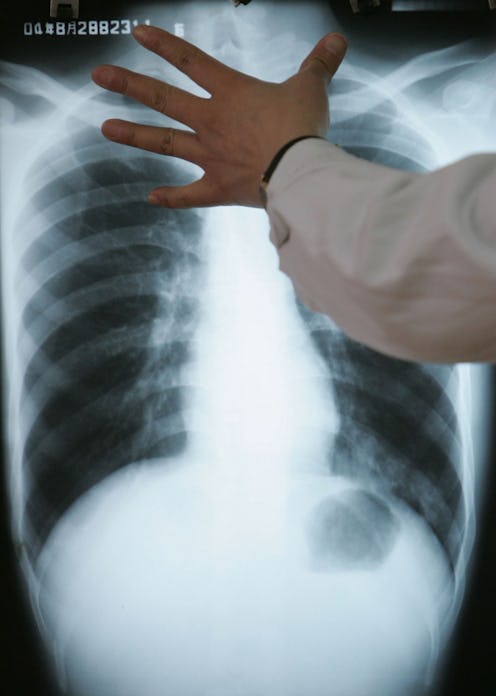Life
Scientists Just Discovered A Human Organ & It's Been In Our Bodies This Whole Time

Get ready, because your grade school science knowledge is about to get a major update. This time, unlike with poor Pluto, scientists aren't removing something. They're adding an entire organ. That's right — a recent study in Scientific Reports has suggested that we may have another, previously unknown major organ called the interstitium, which is a "widespread, macroscopic, fluid-filled space within and between tissues," according to the report. And scientists think it may be linked to how cancer spreads.
As NBC explained, we already knew that interstitial space exists in the human body. About 20 percent of the water in our bodies is interstitial, or not contained within cells. This network of fluid and tissues is called the interstitium, and it's "found throughout the body, both just below the skin and in the digestive, respiratory, and urinary systems," NBC reported.
The researchers, however, are theorizing that this network is actually a legit organ, as distinct as our hearts and kidneys. They used a technique called confocal laser endomicroscopy ("an endoscopic modality developed to obtain very high magnification and resolution images of the mucosal layer of the GI tract," according to an earlier study) and tracer fluid to examine frozen bile ducts, they could see "sinuses that had no known anatomical correlate," researchers wrote in their study report.
The researchers theorize that the sinus structures are part of "a previously unappreciated fluid-filled interstitial space, draining to lymph nodes and supported by a complex network of thick collagen bundles." They observed these structures in several areas of the body, including "the entire gastrointestinal tract and urinary bladder."
Because of how widespread the structures are, and because interstitial fluid is the source of the lymph in lymph nodes, NBC reported, researchers think this potential new organ may be useful in showing how cancer moves through the body. And though they're not ready to shoot their shot and classify the interstitium as a full-fledged organ yet, they do believe their research could prompt "a significant reassessment of anatomy affecting every organ of the body," Neil D. Theise, one of the lead authors and a pathology professor at Langone Medical Center at New York University, told NBC.
Theise also offered some explanation as to how we could've been unaware of an entire organ for this long, despite intensive study of the human body. "There are no pictures of [the interstitium]," he explained. "There are no illustrations of the construct. It's just there."
Researchers working on this project were able to spot the sinus structures because they were freezing biopsy samples prior to imaging them. Usually, "the way scientists traditionally examine human tissue (by slicing it and treating it with chemicals) drains away its fluids," which means that interstitial tissues "pancake like the floors of a collapsed building" and appear flat when imaged, NBC reported.
The structures may be a type of shock absorber for our more delicate, damagable vital organs, according to the study report. In fact, all of the areas where the structures were found "are subject to cycles of compression and distention," like in the lungs and digestive tract. So, to put it bluntly and non-scientifically, the interstitium may be cushioning our bodies from the inside, keeping our bits from bonking into themselves and one another.
While no hard conclusions have been made about the interstitium and its potential for our bodies, researchers say in the study report that their findings "necessitate reconsideration of many of the normal functional activities of different organs and of disordered fluid dynamics in the setting of disease."
In the coming months and years, further examination of this research and further research in this area will have the potential to radically define our entire knowledge of the human body. And that is just plain cool.